Neurological Disorders Targets
Target Search
Background
What is a Neurological Disorder?
Neurological disorders are a range of diseases that affect the central nervous system (including the brain and spinal cord) or the peripheral nervous system (including nerves and muscles). These diseases can be caused by a variety of factors, including genetics, infections, metabolic disorders, environmental factors, lifestyle, and aging. It can be roughly divided into neurodegenerative diseases, neurodevelopmental disorders, cerebrovascular diseases, neuromuscular diseases, neuromuscular diseases, epilepsy, headache and migraine.
According to the World Health Organization (WHO), neurological disorders are now the leading cause of illness and disability in the world. Disability, illness and premature death (measured in disability-adjusted life years, DALYs) due to neurological disorders have increased by 18 per cent since 1990. More than 80% of neurological deaths and health losses occur in low - and middle-income countries, and access to treatment varies widely between countries.
The study of neurological diseases is a rapidly developing field, and scientists are constantly exploring new treatments, including drug therapy, gene therapy, cell therapy, and neuromodulation. In addition, there is an increasing emphasis on early diagnosis and intervention of neurological diseases to reduce the impact of these diseases on patients and society.
Neurological Disorders List
Neurological disorders encompass a wide range of conditions that affect the brain, spinal cord, and nerves. Here is an overview of some major kinds of neurological disorders:
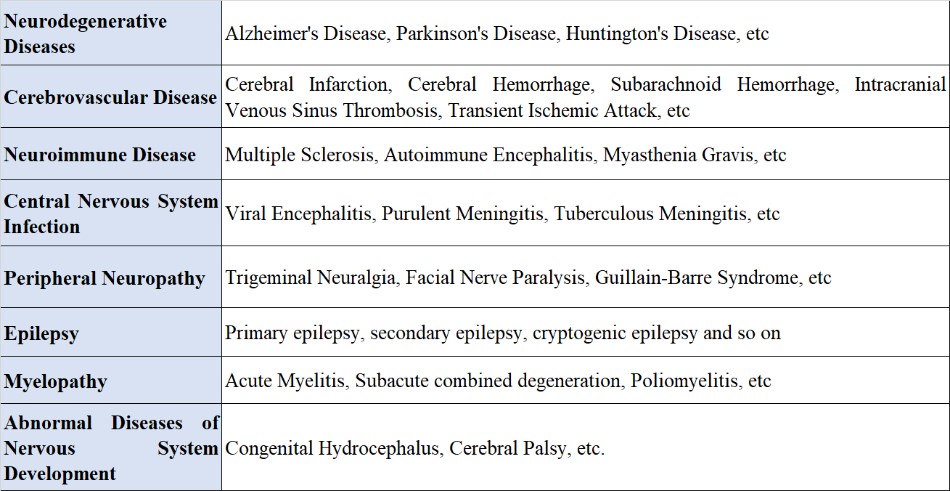
Neurological Disorders Symptoms
Neurological disorders can manifest a wide array of symptoms depending on the specific condition and the part of the nervous system affected. Here are some common symptoms associated with various neurological disorders:
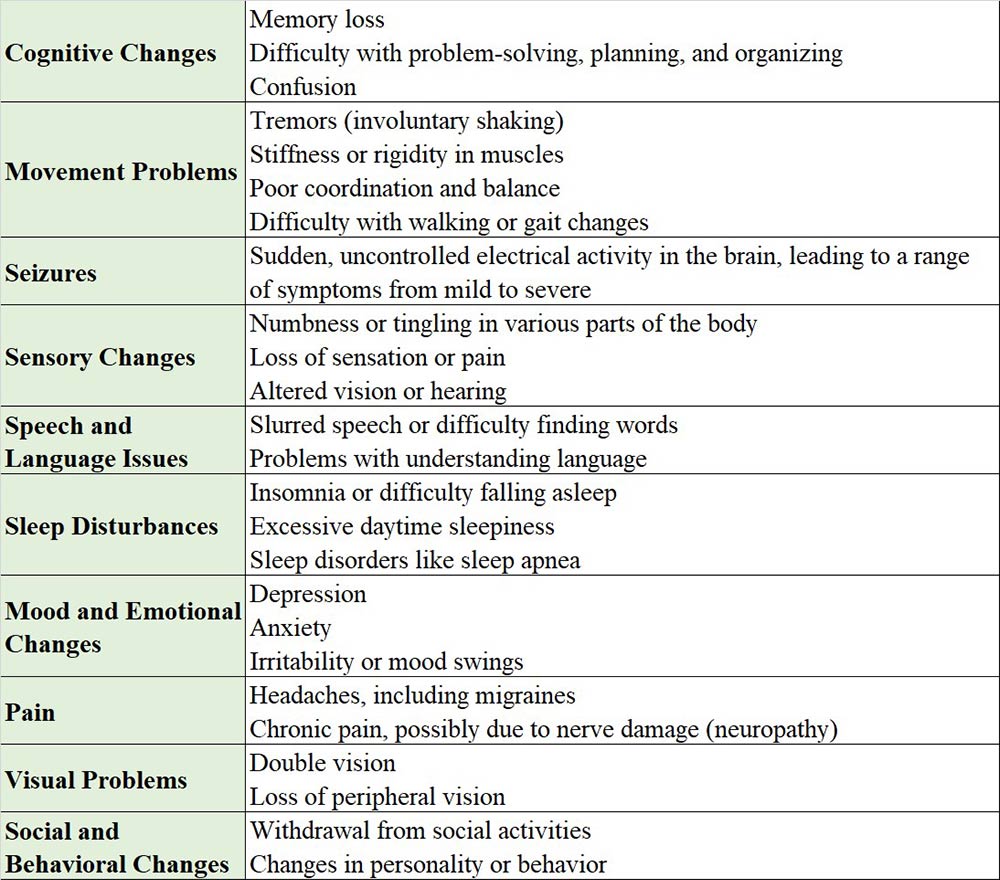
Causes of Neurological Disorders
Genetic Factors: Many neurological disorders are hereditary, caused by changes or mutations in genes that are passed down through families. Examples include Huntington's disease and certain types of muscular dystrophy.
Aging: As the brain ages, it can undergo degenerative changes that lead to disorders such as Alzheimer's disease and Parkinson's disease, which are more common in older adults.
Infections: Various pathogens, including bacteria, viruses, fungi, and parasites, can infect the brain or nervous system, leading to encephalitis, meningitis, or brain abscesses, among other conditions.
Nutritional Deficiencies: Lack of certain nutrients, such as vitamin B12, can lead to neurological disorders like neuropathy or anemia.
Toxic Exposures: Exposure to toxins, including heavy metals (e.g., lead or mercury), pesticides, and certain chemicals, can damage the nervous system.
Autoimmune Conditions: The immune system mistakenly attacking the body's own tissues can lead to disorders like multiple sclerosis, where the immune system attacks the protective covering of nerve fibers.
Metabolic Disorders: Conditions that affect the body's metabolism, such as diabetes, can lead to neurological complications like diabetic neuropathy.
Circulatory Problems: Issues with blood flow, such as stroke, can cause sudden neurological damage due to lack of oxygen to brain tissues.
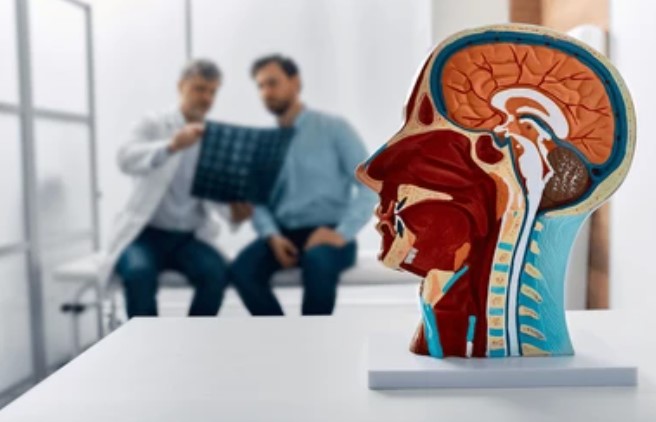
Therapeutic of Neurological Disorders
Neurological disorders are treated in a variety of ways, depending on the specific type of disease, the cause, the course of the disease, and the individual circumstances of the patient. There is currently no cure for many neurological diseases, and the goal of treatment is usually to control symptoms, delay disease progression, improve patients' quality of life, and search for possible disease-modifying therapies. It is mainly divided into three categories: drug treatment, surgical treatment and rehabilitation treatment, and some emerging treatment methods will be introduced below.
Drug Therapies: Medications for neurological disorders include the use of anti-epileptic drugs to control seizures, antidepressants and anti-anxiety drugs to improve mood disorders, anti-Parkinson drugs to reduce motor symptoms of Parkinson's disease, antipsychotic drugs to control psychotic symptoms such as schizophrenia, anti-dementia drugs to delay cognitive decline, immunosuppressants and steroids to treat autoimmune diseases such as multiple sclerosis, and analgesia Medications to manage chronic pain, as well as other specific medications to treat specific symptoms. The purpose of drug therapy is to control symptoms, delay disease progression, and improve the quality of life of patients, and doctors need to develop personalized treatment plans according to the specific conditions of patients.
Surgical Treatments: Surgical treatments for neurological disorders include removal of brain tumors to treat malignancies or certain types of benign tumors, deep brain stimulation surgery to treat movement disorders such as Parkinson's disease, hydrocephalus surgery to relieve pressure in the brain, and spinal surgery to treat certain spinal and spinal cord disorders. As well as performing radiculotomy or neurolysis to relieve certain types of chronic pain. In addition, for some types of epilepsy, surgery may be needed to remove the area of the brain causing the seizures if medical treatment is not effective. Surgical treatment aims to directly address the cause of neurological disorders, improve symptoms, improve quality of life, or prevent further deterioration of the disease, but requires a combination of the patient's overall health and surgical risks.
Rehabilitation Treatments: Rehabilitation for neurological disorders aims to help patients recover or improve physical function, reduce disability, and improve quality of life. This usually includes physical therapy, building muscle strength and coordination through exercise and movement programs; Occupational therapy to help patients with daily living skills training and job adaptation; Speech and language therapy to help with communication and swallowing difficulties; Cognitive rehabilitation to improve memory, attention, and other cognitive functions; And psychosocial support to help patients and families cope with emotional and psychological challenges. In addition, rehabilitation may include the use of assistive devices and adaptive techniques, as well as pain management and education to support the patient's long-term health and self-care. Rehabilitation is an ongoing process that often requires the collaboration of multidisciplinary teams to develop an individualized rehabilitation plan based on the patient's specific circumstances and needs.
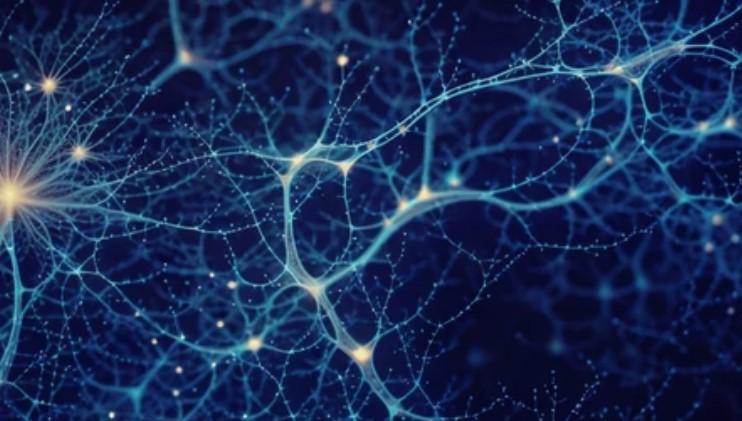
Other Treatments: Cell therapy and immunotherapy for neurological diseases are two cutting-edge therapeutic areas that offer new alternatives to traditional treatments. Cell therapies, including stem cell transplantation and neural stem cell transplantation, are being investigated for the treatment of Parkinson's disease, spinal cord injury, amyotrophic lateral sclerosis, and Alzheimer's disease, among others. The purpose of these therapies is to replace damaged nerve cells and promote nerve regeneration and repair. Immunotherapy focuses on modulating or suppressing an overactive immune response, which is particularly important in diseases such as multiple sclerosis and certain types of autoimmune encephalitis. It may include the use of immunosuppressants, immunomodulators, or biologics to reduce inflammation and nerve damage.
Case Study
Case Study 1: Recombinant Human Amyloid Beta (A4) Precursor Protein (APP-526H)
HIV-1 Tat plays an important role in HIV-associated neurocognitive disorders (HAND) by disrupting intracellular communication. Amyloid beta (Aβ) is produced by amyloid precursor protein (APP) and accumulates in the age plaques of Alzheimer's patients. This study showed that Tat interacts with APP both in vitro and in vivo and increases Aβ42 levels by recruiting APP into lipid rafts. In vitro experiments, the increased cleavage of APP by β-secreting enzymes resulted in a 5.5-fold increase in A-β42 levels. This was consistent with increased beta-C terminal fragment (beta-CTF) levels and decreased α-CTF levels. These results suggest that HIV-1 Tat may promote HAND production by interacting with and altering APP processing, thereby increasing Aβ production.
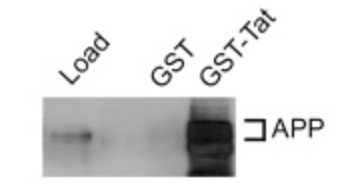
Fig1. Purified recombinant APP interacts with GST-Tat. (Jiyoung Kim, 2013)
Case Study 2: Recombinant Rat GSK3B Protein (GSK3B-2728R)
Sprague-Dawley (SD) rat bone marrow mesenchymal stem cells (BMSCs) were isolated and found to have defective differentiation potential in an interleukin-1β - (IL-1β-) -induced inflammatory microenvironment. Glycogen synthase kinase-3β (GSK-3β) is an evolutionarily conserved serine/threonine kinase that plays a role in many cellular processes. The role of GSK-3β in inflammation may be related to the nuclear factor-κB (NF-κB) signaling pathway and Wnt/β-catenin signaling pathway, the mechanism of which is still unclear. In this study, the researchers used synthetic GSK-3β protein to incubate BMSCs and observed the induction of cartilage formation. Through the inhibitors LiCl and SN50, GSK-3β was found to regulate chondrogenesis through NF-κB and Wnt/β-catenin signaling pathways, and may mediate the cross-reaction of NF-κB and β-catenin in the nucleus. Given the molecular mechanism of GSK-3β in the differentiation of inflammatory cartilage, GSK-3β is a key target for the treatment of inflammatory cartilage diseases.
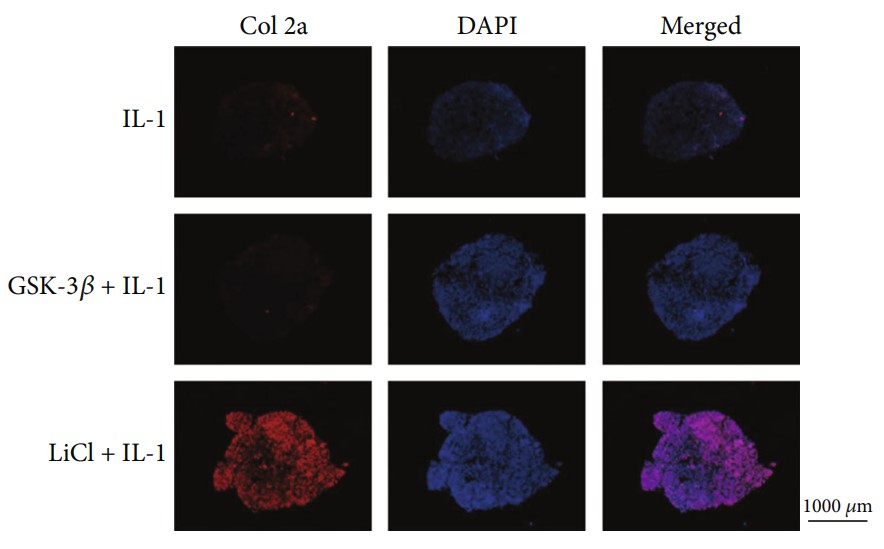
Fig2. Representative immunofluorescence images of collagen 2a. (Zhenggang Wang, 2022)
Case Study 3: Recombinant Human TSPO (TSPO-3462H)
Positron emission tomography (PET) imaging of the transporter protein (TSPO) is widely used as a biomarker for microglial activation. However, the concentration of TSPO protein in the human brain has not been optimally quantified, nor has its regional distribution been compared with TSPO binding. The concentration, age change and regional distribution of TSPO protein in brain tissue were determined by quantitative western blot. To assess the correlation between TSPO protein and TSPO binding in different grey matter regions of the brain, the following regions were used and subregional averages were calculated if necessary: The thalamus, midbrain, pallidum, hippocampus, amygdala, cerebral cortex regions (cingulate gyrus, insula, frontal, temporal, parietal and occipital cortices), cerebellar cortex and striatum (caudate nucleus and Pruman). The results showed that brain TSPO protein concentrations (>0.1 ng/µg protein) were at least 2-70 times higher than those reported in vitro binding experiments. TSPO proteins are widely distributed in gray and white matter regions, and their distribution in major gray matter regions is roughly similar to that of PET binding in second-generation radiotracer studies. Overall, the results show some similarities between TSPO protein and PET binding signatures in the human brain, but also suggest that parts of the TSPO protein pool may be less used for radioland binding.
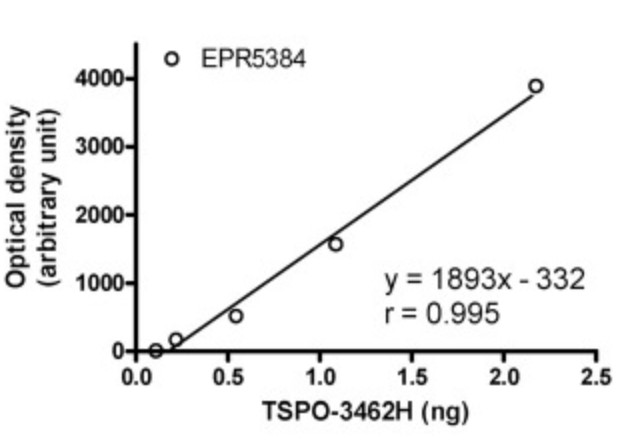
Fig3. Standard curves for the recombinant TSPO. (Junchao Tong, 2020)
Related Resources
Neurological disorders are a group of complex disorders affecting the brain, spinal cord and peripheral nerves, ranging from common headaches and migraines to chronic and progressive disorders such as Alzheimer's disease, Parkinson's disease and multiple sclerosis. Symptoms range from cognitive decline, motor impairment and paresthesia to mood and behavioral changes.
Treating neurological disorders often requires a comprehensive approach, including medication to control symptoms or delay disease progression, surgery to address structural problems or remove lesions, and rehabilitation to help patients regain function and improve quality of life. Emerging therapeutic strategies, such as cell therapy and immunotherapy, are being studied, offering new hope for some difficult-to-treat diseases.
Contact us or send an email at for project quotations and more detailed information.
Quick Links
-

Papers’ PMID to Obtain Coupon
Submit Now -

Refer Friends & New Lab Start-up Promotions

